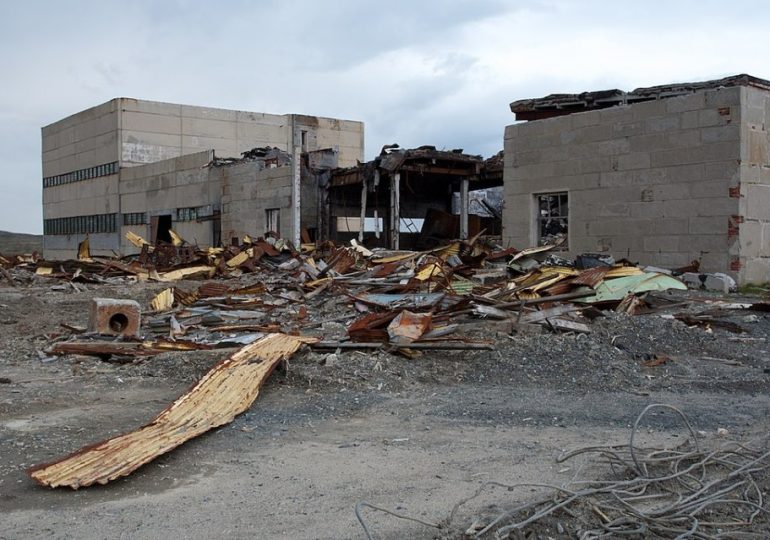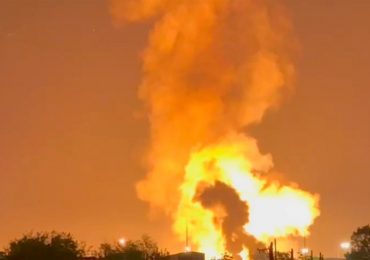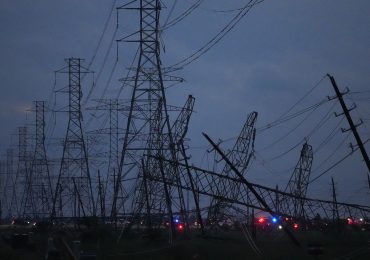TUCKED deep inside the Arctic Circle lies an abandoned Soviet base that is home to the world’s deepest manmade hole dubbed “Well to Hell”.
Located in northwestern Russia near the Norwegian border, the Kola Superdeep Borehole was created by Soviet scientists in a bid to reach the centre of the Earth.
WikicommonsThe derelict Russian base where the Kola Superdeep Borehole was dug[/caption]
By Andre Belozeroff via Wikimedia CommonsThe superstructure of the borehole that reached the deepest point[/caption]
Rakot13/CC BY-SA 3.0The hole is covered by a heavy-duty maintenance lid secured into place by rusty bolts[/caption]
WIKIMEDIAA man standing near the opening of the Kola Superdeep Borehole[/caption]
The hole sits in an eerie derelict drill site among rotting wood, sheets of scrap metal, and torn-down buildings.
It is covered with an unassuming, heavy-duty maintenance hole lid – just the size of a dinner plate – secured into place with huge rusty bolts.
However, underneath the cover is the deepest artificial point ever created by man.
The ambitious project led by mad Soviet scientists started in 1970 near Murmansk – and was intended to go “as deep as possible”.
It was sparked in the Cold War era because of an unspoken rivalry between the US and USSR – much like the space race – to reach the depths of the Earth.
The US first launched Project Manhole in a bid to retrieve a sample from Earth’s mantle by drilling to the bottom of the ocean off Guadalupe Island, Mexico.
While they managed to drill 600ft into the Earth’s surface, the project was shut down by the then government.
And Soviets took the opportunity to try and defeat the US by becoming the first nation to reach the centre of the planet.
Over the course of two decades, Russian engineers kept digging and reached 40,230ft, penetrating almost one-third of the Earth’s crust.
They used the famous soviet Uralmash-4E drilling machine that was used to dig up oil rigs, they reached the deepest point on our planet at 40,230ft.
The deepest point, which exists to date, lies way beneath Mariana Trench point – and is more than Mount Everest and Mount Fuji put together.
It is also further down than the wreck of the Titanic, which lies 12,500 feet down in the ocean
If one were to fall down the hole, it would take around 4 minutes to reach the bottom.
Legend has it that the whole is so deep that people can hear screams of souls burning deep in hell.
But for Russian scientists, who wanted to go even beyond, the depth was simply not enough.
They even installed a new, purpose-built drill machine called the Uralmash-15000 to reach the ambitious depth of 44,000ft.
However, in 1992 they had to stop drilling because the temperature down the hole reached 180 degrees Celsius – far hotter than the scientists predicted it would be.
At such hot temperatures, even industrial-grade materials start to melt.
While scientists still needed to figure out a way to overcome the temperature issue, the funding for the soviet project was stopped after the disintegration of the USSR.
And eventually, the once-beaming research site was abandoned to stand the test of time.
The hole has since been sealed up, but not before scientists were able to unlock many secrets and mysteries beneath the Earth’s surface.
The researchers discovered liquid water at 38,000ft into Earth’s crust, something that was previously thought to be impossible.
They also found 24 new types of long-dead single-celled organisms and gained access to rocks that were 2.7 billion years old.
Some of the deepest points on Earth
MARIANA TRENCH – 36,201ft
Tonga Trench – 35,702ft
The Philippine Trench – 34,580ft
The Kermadec Trench – 32,963
The Puerto Rico Trench – 27,480ft
The Peru-Chile Trench – 26,460
The Mponeng Gold Mine – 13,200ft
The Denman Glacier – 11,700ft
The Veryovkina Cave – 7,257ft
Getty – ContributorDrillers A. Sarayev (L) and I. Gritsay at work working at the site in 1986[/caption]
Getty – ContributorDrilling installation for the borehole in operation[/caption]
AlamyThe once-beaming research site was abandoned to stand the test of time[/caption]
Leave a comment








